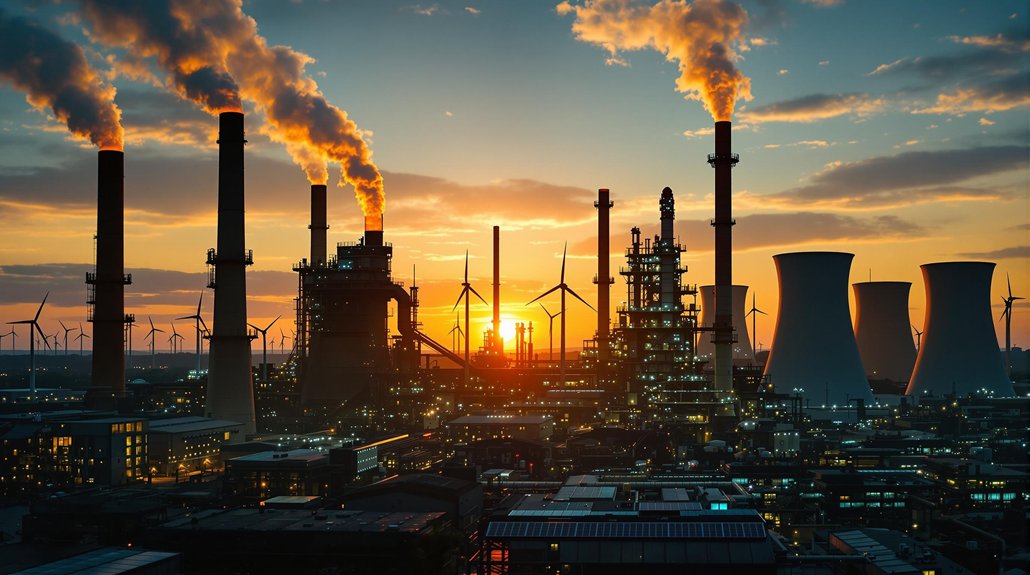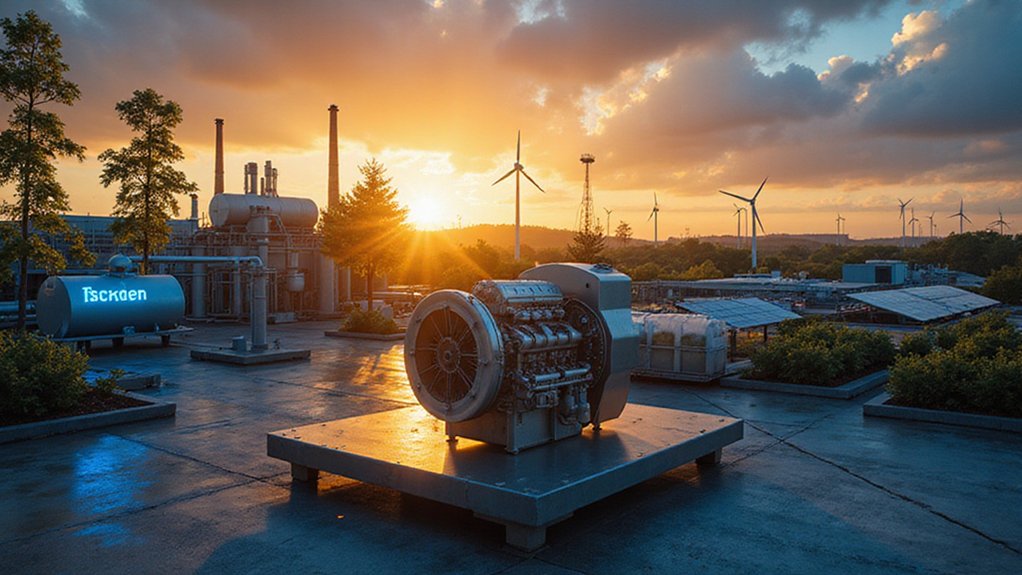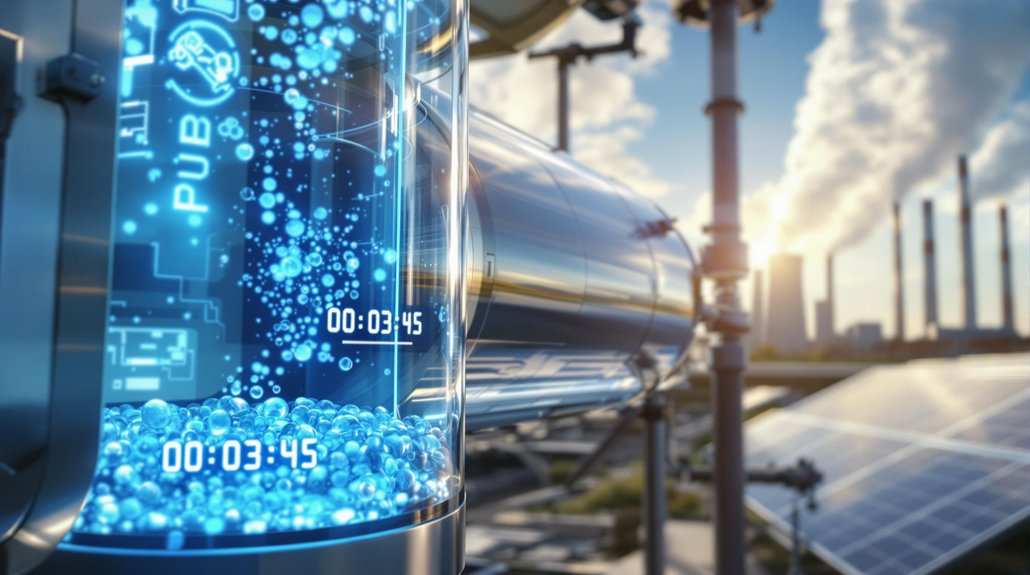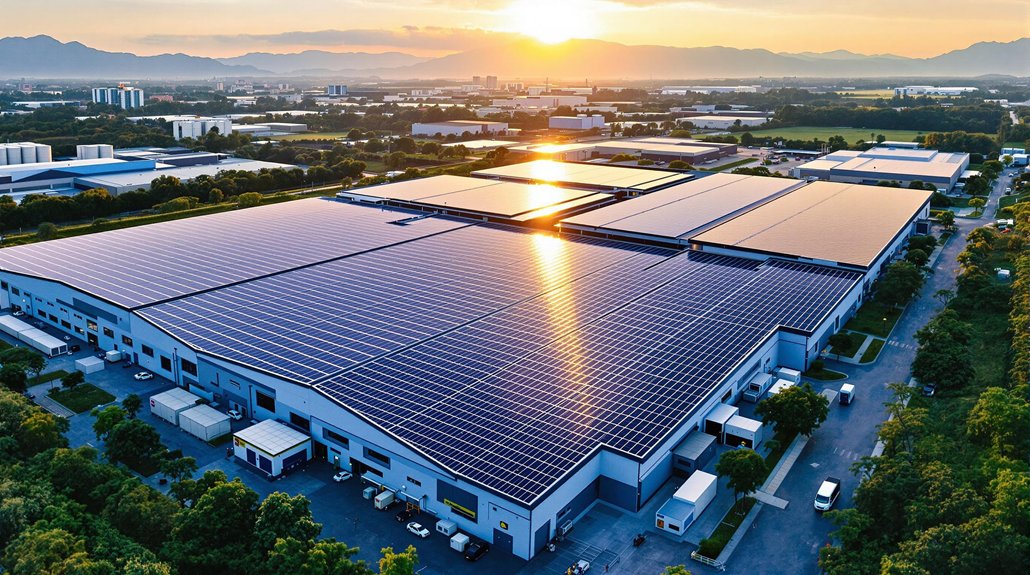Leading steel manufacturers are embracing green technologies to cut costs and emissions. Companies like ArcelorMittal and SSAB have launched ambitious initiatives using hydrogen-based direct reduction and renewable energy. These projects slash carbon footprints while potentially reducing long-term energy expenses. Initial investments are steep—30-80% higher than traditional methods—but the payoff could be massive. With the steel industry responsible for 8% of global carbon emissions, these game-changers aren’t just good PR. They’re survival strategies.
While major steel producer ArcelorMittal ramps up its ambitious green initiative, the $6.7 billion question remains: can an industry responsible for 8% of global carbon emissions truly clean up its act? The steel giant isn’t alone in this greening endeavor. Posco is leading a massive green hydrogen project in Oman worth $6.7 billion, while competitors like SSAB partner with HYBRIT for fossil-free steel production. H2 Green Steel is nearing permitting phase for four new projects in Quebec, Texas, Brazil, and Portugal. Big money, big promises.
Traditional steel manufacturing is dirty business. Coal-fired blast furnaces belch CO2 like it’s going out of style. Which it is, actually. The industry’s targeting carbon neutrality by 2050, with ArcelorMittal specifically aiming for a 30% CO2 reduction by 2030. Bold claims from an industry that’s historically been about as clean as a chimney sweep.
Steel’s dirty secret: blast furnaces spewing CO2 while execs promise a green future they’ve avoided for decades.
The technological shift is real, though. Hydrogen-based direct reduction is replacing coal in many operations. Electric arc furnaces powered by renewable energy are gaining traction. Some companies are even exploring biochar as a substitute for coke. ThyssenKrupp isn’t just changing its impossible-to-spell name; they’re developing carbon-free production methods too. Germany’s Salzgitter is making waves with its innovative wind-plus-hydrogen technology that aims for dramatic emission reductions.
It’s not all sunshine and rainbows. Green steel costs more—like, a lot more. Initial production increases range from 30-80%. Ouch. There’s also the small problem of needing massive amounts of renewable electricity and green hydrogen that, frankly, doesn’t exist at scale yet. Integrating wind energy could help solve this challenge, as it produces zero emissions during operation while offering competitive electricity rates.
Governments are stepping in. The EU’s Carbon Border Adjustment Mechanism aims to protect green steel producers from cheaper, high-emission imports. Because nothing says “save the planet” like a good trade policy.
The potential upside? Green steel could slash emissions by up to 95%. That’s not just good for polar bears; it might be good business too. The green steel market value is expected to grow considerably, creating jobs in renewable energy and new steel technologies.
Steel recycling currently covers just 26% of global demand. Pathetic, really. But with new technologies like molten oxide electrolysis and advanced carbon capture methods, the industry might finally clean up its act. Maybe.









